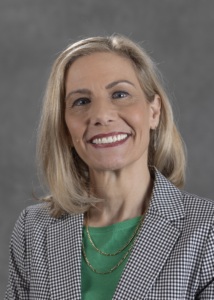Actions the prep program took
Building strong partnerships to identify areas of for improvement
Southeastern’s prep program emphasizes “co-constructing and collaborating with district partners,” an approach to clinical practice that grew substantially during the pandemic, by taking the following actions:
- Organizing early fieldwork activities: The prep program shares planned coursework for the upcoming year with the 12 districts who host candidates for pre-residency clinical experiences. It identifies the specific activities in which they want candidates to engage. Each district has a “district liaison” who reaches out to school leaders, who can sign up to host candidates for specific, tiered activities.
- Regular meetings with residency partners: The prep program partners with 10 districts that host residents for a year-long clinical placement. Four times a year, the prep program convenes a governance meeting with these partners. Since the pandemic, Southeastern has brought all 10 districts to the same meeting, which helps districts work more collaboratively with each other and also empowers them to speak up and provide feedback to the prep program. The agenda always includes several questions based on student performance, workforce needs, or other data-driven topics, specifically designed to elicit district feedback.
A move toward high-quality instructional materials

Historically, teacher candidates at Southeastern were encouraged to write their own detailed lesson plans. However, districts found that these self-created lesson plans often departed from the accepted high-quality instructional materials (HQIM) used in the district, and thought it would be more useful and instructionally effective for residents to work with existing high-quality lesson plans aligned to the district’s curricula so that they could strengthen their instructional impact. Clinical practice opportunities brought this disconnect to a head: if a science methods course wanted candidates to teach a sample lesson, that lesson needed to fit within the scope and sequence of the curriculum the schools were using. A custom lesson that was out of step with both the content and style of the class might have been useful to a teacher candidate, but missed the mark for students.
As Louisiana required districts to integrate HQIM, the prep program had to shift too, preparing candidates to implement guided curricula rather than developing their own.
- Starting in fall 2024, lower-level undergraduate courses must embed at least one assignment that integrates HQIM in a meaningful way. The faculty will work in small groups to develop these assignments, which program leaders will review.
- The Louisiana Department of Education has helped the prep program gain access to digital and print materials for a range of curricula in use across the state. The state also requires districts to publish which curricula they use, which helps prep programs identify the most relevant curricula for candidates to learn about.
Using data to inform program improvement at all levels
Jordan Ahrend, director of clinical practice & residency, shares her philosophy on data:
“If a program collects data to sit on a computer, and it is never used, the data is not performing its purpose: to improve the preparation of our aspiring teachers. Data here is shared at all levels of the program, not only with district stakeholders, but also with mentor teachers, site coordinators, and residents. Every piece of data informs the next decision.” Jordan Ahrend, director of clinical practice & residency
- For residents: Residents engage in a POP cycle (pre-observation meeting, observation, post-observation meeting), with their site coordinator (i.e., program supervisor). For example, prior to the pre-conference meeting, residents collect student data on several specific reflection questions, and the program supervisor will probe deeper in the data with questions like, “10% of the class fell far below expectations in this area, what can you tell me about why they struggle in that area?” They revisit assessment data in the post-observation meeting to identify how students have grown and what did and did not work.
- For program supervisors: They review data across all their residents, looking for trends in the feedback and ratings they give to their residents. The prep program uses insights from this data across program supervisors to identify areas where supervisors need additional professional learning. For example, residents consistently scored low on the “questioning” indicator on their observation rubric, so the university partnered with the National Institute for Excellence in Teaching (NIET) to facilitate a workshop on questioning skills. All faculty attended the workshop, based on the premise that “if we do not share a common language among freshman instructors, we can’t expect senior instructors to do something different.” Program leaders are also working to develop program supervisors’ ability to analyze their own data.
- For districts: The district members who participate in the governance meetings receive data about all of their students and residents. This includes residents’ evaluations of K–12 student achievement, self-assessments, mentor teacher feedback, and insights regarding PK–12 student achievement.
- For the prep program: In addition to reviewing all the data described above, the program also surveys student teachers at the end of each semester of their residency to gather feedback about the program, their site coordinator, and their mentor teacher.
Outcomes
This case study highlights how the prep program has established effective feedback loops with its district partners. The districts have now seen how their candid feedback can result in real change at the program level, strengthening their trust in the partnership. The program also now partners with more districts (from six before the pandemic to 10 today), suggesting that districts find the partnerships valuable.
The transition to embed HQIM into coursework is nascent, so the program does not yet have outcomes to share. However, the prep program prides itself on building strong partnerships and constantly iterating and improving its approach to teacher prep.
“I don’t want people to think this is idealistic; it’s not. It just takes a whole lot of work. It’s hard work, and it’s constant work. You feel like you’re finally there, but then you have to do something different, because truly meeting the needs of our students and rethinking the preparation process is constantly adapting, and it’s exhausting. But this work can be done, especially when you have a team of those willing and able to support the collective mission of preparing our future educators.”Jordan Ahrend, director of clinical practice & residency
Advice
- Be open to feedback and be transparent with the information you collect: Ahrend shares, “Our program is in a constant state of vulnerability. When we ask our stakeholders for feedback, sometimes they push the program and the structures that are in place, but we want to be pushed, we want to be better. And it is so important that our program is transparent—nothing is secret, we share information with all stakeholders. At the end of the day, we can’t let anything impact our shared goal of effectively preparing our teachers for the realities of the workforce.”
- Prioritize a few changes at a time so you can focus on quality: A Southeastern site coordinator shares, “All of this work is the culmination of six years of evolution. Each year, we try to focus on one or two things. It’s more about quality than quantity. We would rather do one thing well than five things halfway.”

